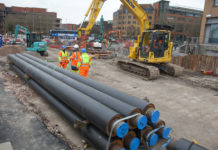 Crises happen. Organisations might like to wish that they didn’t, but the reality is that the unexpected has an unhappy knack of occurring. Steve Macaulay, Cranfield School of Management, underlines the importance of becoming a ‘crisis-ready’ organisation in this sponsored post
Crises happen. Organisations might like to wish that they didn’t, but the reality is that the unexpected has an unhappy knack of occurring. Steve Macaulay, Cranfield School of Management, underlines the importance of becoming a ‘crisis-ready’ organisation in this sponsored post
The consequences of crises aren’t pleasant—even when there is no loss of life. Financial penalties, reputational damage, lost production, law suits. Management resources devoted to dealing with official investigations and audits. And so on, and so on.
In short, any organisation is at risk of finding itself at the centre of a damaging crisis, calling for urgent crisis management. And given the immense variety of the potential crises that could afflict an organisation, it’s difficult—if not impossible—to have a pre-prepared crisis playbook to hand.
What to do? Research suggests two organisational models that can both minimise the probability of crises occurring, as well as making crisis management easier.
The high-reliability organisation.
Let’s be clear: the high-reliability organisation isn’t about creating an environment in which mistakes and accidents never happen, and in which crisis management is unnecessary.
In a high-reliability organisation, errors are expected. So when things actually do go wrong, the organisation is prepared. The crisis management response is rapid, the damage is minimised, and the lessons are applied rapidly to prevent a recurrence.
Moreover, another powerful feature of a high-reliability organisation is its deference to expertise, which means giving decision rights to those closest to the action—regardless of their seniority.
The built‑to‑change organisation
Many organisations can be considered to be ‘built‑to‑last’ organisations: they place a premium on stability and predictability, and they have hierarchal structures, in which people with detailed job descriptions follow standard operating procedures.
But life, as we know, isn’t like that. You can’t avoid crises by deeming them impermissible.
And worse, the loss of flexibility in built-to-last organisations is not helpful at times of crisis management, when an organisation may have to respond rapidly to unpredictable events. The last thing you want in a crisis is a member of staff at the centre of the action saying, “That’s not my job” or “That’s above my pay grade”.
Instead, crisis-ready organisations aim to become ‘built-to-change’ organisations, replacing detailed job descriptions with goals and objectives; replacing hierarchal structures with process-based cross-functional networks, and hiring quick learners with initiative who like change and development.
So which is best? And how to get there?
So should your organisation aim to become a high-reliability organisation, or a built-to-change organisation? Perhaps surprisingly, the answer is neither—or at least, not in isolation.
One of the most powerful ways to improve an organisation’s crisis-readiness is through adopting a combination of both the ‘high reliability’ and built‑to‑change organisational models.
Most of the necessary steps involve making changes to human resource management policies and practices: granting decision rights, swapping job descriptions for individual and team goals, revising hiring criteria and rewards systems to encourage change and agility, using process and network structures and cross‑functional teams, and developing shared leadership.
Develop a new approach to Organizational Resilience and improved leadership with Cranfield School of Management and BSI, the business improvement company. Find out more about our Leading Organizational Resilience programme.



